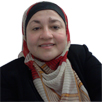
|
Dr. Rania Qutieshat
Assistant Professor
Balqa Applied University
Jordan
Biography
Kindly be informed that I am now working at al Balqa Applied University since September 2004 at Planning & Project Management Department /planning collage. I was Instructor after I finished my Master’s Degree in the same university in Regional Planning. I have a fellowship from the same university. Recently I finished my PhD degree in Geography in 2012; my dissertation addressed "Analyzing the Characteristics of Urban System in Jordan Using GIS". I enhance my abilities by taking many specialized Training courses especially in GIS, PMP, Primavera, AutoCAD, Ms Project and Negotiation Skills Course, Planning Organization Rules, Environmental Planning. Currently, I am Assistant professor teaching undergraduate & Graduate students .I participate in a lot of International conferences & workshops inside and outside Jordan.Earlier, I was working for three years as a District Manager at Al-Arda New Municipality. My first degree was in Architectural Engineering, from the University of Jordan year 1989. I worked as a Designer and a Supervisor Architect Engineer in several companies for three years. Later on, I established my own company, working in design and supervision of Building constructions.
My Research Interests include:
• Urban Systems & Urban Planning
• Computer Techniques in Spatial Planning mainly GIS & Remote Sensing
• Environmental issues &Sustainable Land Use & Climate Change
• Planning Analyses and Assessments
• Regional Development
Abstract
Remote Sensing and GIS Techniques for Monitoring Industrial Wastes for Amman City
The city of Amman is located in the central Mesopotamian plain of the Mid Region of Jordan. Since Amman city is the capital of Jordan. It is surrounded by network of industrial areas for different purposes and this affects the environment. Solid wastes generated from domestic sources can significantly impair drinking, irrigation, recreational water, in addition to other water sources and soil in rural and urban areas. Therefore, the environment and wild life must be monitored and controlled very well. The techniques demonstrated in this research include procedures for developing regional spatial data into a coordinated GIS database, characterizing and identifying wildlife habitat, quantifying and assessing land use change, pollution due to changes in land use and demonstrating the application of these GIS and modeling methods for assessing cumulative environmental effects associated with land use change.
The main results of applying RS & GIS techniques for monitoring industrial wastes of Amman city were identifying Shab Industry Zone and Al Bayader Industry Zone as the most dangerous on land cover .The digital image classification coupled with GIS has demonstrated its ability to provide comprehensive information on the nature, rate and location of environment monitoring. Using GIS and RS techniques in the environmental assessment give a quick and low cost technique. Preliminary investigation can be considered as aiding tools to the traditional and detailed investigation procedures.
|

